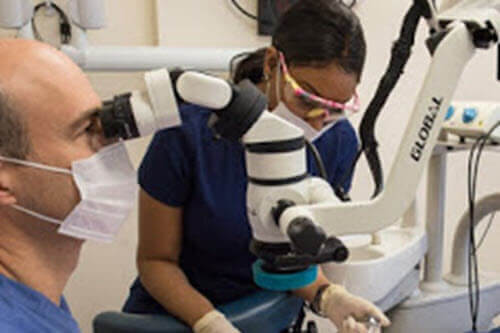
There were 16 patients with Miller class I /II gingival recession (recession to the mucogingival junction). One side was treated with a subepithelial connective tissue graft (SECTG) and the other with Alloderm. Clinical parameters were measured at baseline, 6 months, and 5 years post-surgery.
At 6 months, all parameters showed significant improvement in both groups (root coverage, reduction of recession width, reduction of recession height). At 5 years, it was noted that compared to the baseline, there was no difference in complete root coverage between the groups. The increase in gingival thickness in the SECTG sites was stable for the same period but returned to pre-surgical values in the Alloderm-treated sites.
For the past 15 years, I have treated at least one patient per day for gingival grafting. Over the years I also have noticed, when using Alloderm, the thickness of the graft is lost over time and less keratinized tissue is formed when compared to SECTG. The loss of gingival thickness is significant. Gingival thickness is important because the thicker the tissue, the more resistant it is to trauma and the less likely it is that recession will occur. For these reasons, my first choice is always a subepithelial connective tissue graft which utilizes the patient’s own tissue. There are times when the palatal anatomy is not conducive to harvesting a graft and in these cases, I do recommend Alloderm.
